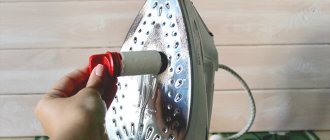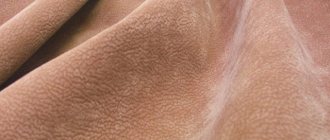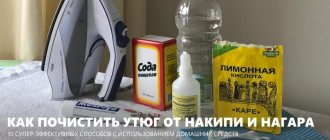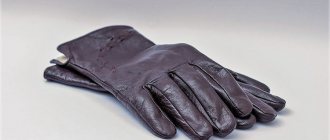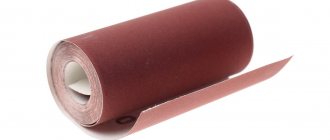Teflon coated iron: features and advantages
Teflon is a substance that has non-stick properties. Thanks to them, the iron easily glides over the fabric while ironing without sticking to it. This material conducts heat well, so folds are smoothed out efficiently, even without any effort. It is not destroyed by alkalis and acids, and is heat and frost resistant.
This coating has a significant disadvantage - it is easily damaged and scratches appear if handled carelessly. It requires careful care, gentle cleaning products and a safe storage place. However, even with proper cleaning and non-stick coating, violation of the temperature regime leads to the formation of soot.
Vinegar
This method allows you to clean not only the outside, but also the inside.
How to clean their soles?
- You need to warm up the device a little.
- Next, moisten a cotton pad or cotton pad (a rag is also used) with vinegar.
- We rub it until we see that the stain has been eliminated.
The holes are usually cleaned with cotton swabs.
Take precautions! Do not hold the iron too close to you - vinegar irritates the mucous membrane.
How to clean a Teflon-coated iron from burning at home
If the sole of the equipment is dirty, it will glide worse on the fabric, synthetics will begin to stick, and the folds will no longer be smoothed out. Since the material is resistant to chemical attack, you can clean a Teflon-coated iron with almost any product designed for this purpose. The only limitation will be the cleaning tool. For example, you should not rub the surface with hard abrasive materials, an iron sponge or brush, or scrape off burnt marks with a knife.
It is also important to know how to work with the cleaner to get the desired result. Some substances only work under certain conditions, but may be ineffective if used incorrectly.
Special chemicals
Store-bought cleaners are made to work on aluminum, ceramic, Teflon and even steel irons without damaging all of these materials equally. Pencils cope with heavy stains when available tools are not enough. To treat the surface you need to follow the instructions:
- Heat the iron to medium temperature on the dial.
- Holding the pencil perpendicular to the sole, move it over the contaminated areas. It will begin to melt, dissolving the scorch marks.
- Wipe the iron with a soft cloth.
- Iron the unwanted piece of material with steam, pressing the steam button to clean the holes.
Residues of the cleaner can be wiped off with a damp cloth after it has cooled.
Using materials at hand
If you need equipment urgently, but there are no commercial cleaning products at home, you can use what you have in the kitchen or bathroom. You can clean a Teflon-coated iron without using professional cleaners. Acids and alkalis work with this type of pollution if they are used in the right concentration. It's best to clean your iron immediately after it burns, as the cumulative effect of several ironings will harden the stains. They will dissolve worse, and plaque spots that do not come off will damage the clothes.
Lemon acid
Citric acid is a natural oxidizing agent that gently cleans surfaces.
It must be dissolved in the correct concentration for it to work:
- Heat a glass of water to almost boiling.
- Dissolve 1 tablespoon of citric acid in it.
- Prepare a soft cloth, preferably flannel, and soak it in the solution.
- Wipe the surface of the iron, preheating it to one or the “silk” value.
- Wash off any remaining acid with warm water. Iron the unwanted fabric with steam.
If the stains do not come off immediately, you can moisten them with acid and leave them for a couple of minutes, repeating this procedure several times. It's best to soak them when the iron is a little warm.
Vinegar
You can clean the Teflon soleplate of your iron from carbon deposits at home using vinegar:
- Table vinegar does not need to be diluted with water, since this is a solution with a concentration of 5 to 9%.
- Moisten a cotton pad with it and wipe the soleplate of the iron.
- If the carbon deposits do not come off, you can leave the cotton pads with vinegar on the iron for 10-15 minutes, allowing the acid to act.
- Wash off any residue from the surface with clean water.
In addition to external cleaning, vinegar helps remove scale from the steam vents. To do this, you need to dilute the liquid a little and pour it into the water compartment. Turn on the iron and press the steam button until the scale comes out. Do the same with clean water.
Hydrogen peroxide
Pharmacies sell hydrogen peroxide with a concentration of 3%.
It is quite enough to dissolve a thin layer of plaque on the work surface:
- Moisten a piece of cloth or cotton wool generously with hydrogen peroxide.
- Wipe the cold work surface, paying attention to burnt areas.
- Drop a little peroxide onto the stain and leave it for a few minutes if it doesn't rub off well.
- Wipe everything with a clean damp cloth, preventing streaks.
You must work with a cold iron, otherwise the peroxide will quickly evaporate and will not have time to act. It is better to let the solvent sit for a few minutes.
Toothpaste
Toothpaste easily dissolves plaque from staining foods and drinks and copes with household stains:
- Apply a small pea of paste to a damp soft brush.
- Preheat the iron to minimum temperature.
- Distribute the paste over the sole, rub lightly, foaming it.
- When the stains dissolve, wipe off the foam and dirt with a clean napkin. Repeat wiping with a damp cloth several times, as a lot of soap residue may remain.
You should use simple toothpaste, without abrasive whitening particles and crumbs, so as not to scratch the Teflon. Otherwise, its composition will not harm the non-stick coating, so you can use the cheapest option.
Laundry soap
This cleaning product is used in laundry, cleaning and even for cosmetic purposes:
- To obtain a homogeneous soap solution or to evenly distribute the product over the surface, the laundry soap must be grated on a fine grater.
- Pour the shavings onto the fabric.
- Heat the iron to minimum temperature.
- Iron the fabric with soap until it dissolves on the sole and acts on the plaque.
- Wipe everything with a damp cloth several times.
You can also rub a warm iron with a bar of soap, heat it up more so that the soap melts and works, and then rinse it off. This method will only help with fresh stains of burnt synthetic fabric.
Paraffin candle
If you don’t have a special pencil, but the iron needs to be cleaned, you can save the Teflon sole of the iron from carbon deposits at home with paraffin:
- With a paraffin candle, you will have to heat the iron to maximum temperature and take a long piece of the candle so as not to damage your fingers.
- Wrap the edge of the candle with a napkin and, holding it, rub the sole with paraffin. It is better to do this over paper or newspaper so that the candle drips there.
- It is important to bypass the steam holes, as they will become clogged and the paraffin will no longer be removed from there.
- When the burnt material melts along with the paraffin, remove everything with a napkin from the now cooled equipment.
Keeping the surface parallel to the floor while cleaning will reduce the chance of your iron clogging.
Special blades
In addition to chemical removal, mechanical removal using gentle tools is also effective. Teflon is the least damaging to the material itself. There are special blades for equipment made from this plastic:
- Heat the iron to maximum temperature, wait a couple of minutes until the burnt spots begin to melt.
- Remove dirt with a cold spatula.
- Wipe the spatula and let it cool. Repeat until the sole is clean.
It is necessary to keep the spatula cold so that it collects the melted synthetic material. Otherwise, it will create streaks and leave dirt in place.
Foil
For this method, you will need a smooth and solid piece of foil without creases so that they do not scratch the Teflon. The foil will heat up and collect the burnt fabric:
- Place the foil on a flat, hard surface.
- Heat the iron to medium temperature. If it doesn't work, heat it up to maximum.
- Iron the foil.
Foil that is too thin may start to melt, so it is better to use a durable one that is suitable for baking in the oven. This works best on fresh stains.
Using special iron cleaning products
Stores sell special cleaning products. The following have proven themselves to be excellent:
- Chemical pencil - effective, inexpensive, easy to use. Looks like a child's chalk. To achieve results when using it, you need to heat the device, unplug it, run a pencil over the contaminated surface, a chemical reaction will occur, the carbon will get wet, wipe it with a dry cloth with a natural composition.
- “Topperr” - applied to the sole of the device. After waiting 10 minutes, remove the contamination using a damp material.
- "Doctor Fresh" and "Top House" are also good for getting rid of burns. The principle of operation is similar to the previous remedy.
How to remove a scratch on the Teflon surface of an iron
Scratches on Teflon can vary in depth. If the scratch is not through, it will not cause much harm. As long as the integrity of the surface is maintained, it will protect things from burning.
If metal is visible under the Teflon layer, such a scratch will gradually destroy the protective layer around it, and therefore the iron will become unusable. Nothing can be done to repair such damage, since fluoroplastic is a toxic substance that is used only in production. Therefore, careful handling will be the best prevention of scratches on equipment.
Household chemicals
Professional cleaners are the first thing you need to consider. Some of the possible ones (the list includes entire sets):
- Magic Power - the composition takes care of Teflon, removes and washes away various stains with a high degree of efficiency. When washed off, not a trace remains of it.
- Topperr – eliminates plaque; Absolutely non-toxic, aimed at extending the service life of devices.
- Top House – serves to keep ironing units in good shape. Maintains and extends the life of devices.
How to clean a Teflon-coated iron from synthetic deposits
Other solvents will also help you clean the Teflon soleplate of your iron from carbon deposits at home:
- Baking soda. It consists of small sharp grains, so it must be dissolved in water in high concentration. Wipe the sole with the mixture, leave wet wipes or cotton wool with baking soda on the stain so that it has a better effect. Wipe off with warm water.
- Nail polish remover. It works with a thin layer of burnt synthetics. It is enough to wipe the cold surface with a cotton pad with liquid.
All of the above products are also suitable; they remove carbon deposits from any type of fabric.
Why does soot form?
The iron with a Teflon polymer sole is certainly durable and wear-resistant. But these qualities are not able to completely protect against scratches, on which a black soot stain forms over time.
The device can be damaged or damaged under the following circumstances:
- contact of a hot surface with metal jewelry, locks, buttons;
- keeping the sole in one place for a long time;
- choosing the wrong mode for ironing synthetic fabric;
- setting a high temperature when working with materials that are highly adhesive;
- using unfiltered water to supply steam.
If you were unable to protect the surface of the iron from contamination, do not be discouraged. You can restore cleanliness and shine with the help of simple devices and accessible recipes.
Simple ironing rules
Prevention is easier than cure, so following proper ironing rules will help prevent the problem from recurring in the future.
- Follow the instructions on the clothing label. On any item it is written what material it is made of and at what temperature it can be ironed. Strict adherence will eliminate the possibility of burning.
- An item that wrinkles easily and has a low temperature threshold can be ironed through damp gauze. This will speed up the removal of wrinkles and reduce contact with clothing.
Maintenance of the iron should be timely, then carbon deposits will be easy to remove.
Lemon acid
The liquid perfectly replaces vinegar. To clean, perform the following steps:
- We form a working solution. Dissolve about three sachets of citric acid in one whole glass of water.
- Then rub the sole with a dampened material or cotton wool.
If you decide to carry out a comprehensive cleaning, then lemon will also help with removing scale. Pour the prepared solution into the hole and activate the self-cleaning function. To remove scale and limescale, pour water into the tank again and evaporate it.
Hydroperite and wooden spatula
You can clean the Teflon coating of a household appliance using hydroperite.
To do this, dilute 2 tablets of the substance in 100 ml of warm water and pour the resulting solution into the water container on your iron. Turn on full power and iron any fabric you don’t need for 10 minutes. Afterwards, wipe the soleplate of the iron with a dry cloth and fill the container with plain water again. Wait for complete evaporation and wipe the surface of the household appliance with a dry cloth. Leave the iron to dry for several hours and then you can use it with pleasure.
If you do not want to use “chemistry” to remove melted pieces of fabric and polyethylene, then you can use a regular wooden stick or a kitchen spatula to remove burnt materials. Afterwards, you will need to heat the iron at full power and run it over clean fabric.
Tidying up the ceramic sole
Devices with ceramic soles are the most reliable and durable. Such irons are able to smooth out any wrinkles and can retain heat for a long time. But even with a self-cleaning function, the products still get dirty.
You can clean the ceramic platform with a solution of ammonia and lemon juice. To do this, flannel fabric is soaked in the prepared liquid and the working part of the iron is wiped with it. You can also use hydrogen peroxide, which will remove scale and yellowness.
A product for glass ceramics is also suitable, but it is expensive. It is applied to the cold soleplate of the iron, then wiped with a sponge. The burnt fabric is scraped off with a wooden spatula. To do this, the iron is heated, and at the end of the process, the rough type of material is ironed.
A hydroperite tablet will help clean ceramic deposits. You can find out how to work with it above.
Candle
Paraffin is an excellent way to remove burnt marks from polytetrafluoroethylene.
You can buy a regular candle at a hardware store. It is wrapped in cotton cloth and the hot sole of the device is rubbed in a circular motion.
The iron must be held over an unnecessary bowl or a stack of newspapers. During the process, the paraffin will melt and flow down.
This method cannot be used if the Teflon coating has steam holes. Paraffin is very difficult to remove from them, and the next time you iron things, it can stain them.
Remains of the candle are removed with a soft cloth after the iron has cooled slightly.
Pencil
Modern chemistry is a simple and safe method to clean Teflon soles.
A special pencil can be purchased at hardware and construction stores. It has a pungent and unpleasant odor, so before using it you must open all windows or carry out cleansing procedures in the fresh air.
There may be several types of this product in the store. Manufacturers claim the unique features of this product. However, all pencils are the same and act the same, they just may look different.
How to clean a burnt iron?
To put polytetrafluoroethylene in order you will need:
- pencil;
- paper napkin or cotton rag.
The procedure itself is very simple and safe; if the smell bothers you, wear a protective mask.
First you need to turn off the steam function and turn on the maximum temperature of the Teflon iron. When the device heats up, it is disconnected from the network. While the device is still hot, take a pencil and paint the entire coating.
It will melt during cleaning, so take care of your hands, it is better to wear gloves . Due to melting, the pencil releases gas and dissolves all contaminants.
After treating the entire surface, wipe it with a cotton cloth. You can put the fabric and iron it, pressing firmly on the device.
Soap
One of the cheapest ways to clean a device with a Teflon working surface is to use laundry soap.
First, the device is heated to a minimum temperature and disconnected from the network. Then take regular soap and rub the sole with it. It will begin to melt and thereby soften the burn.
After completing the manipulation, wipe the sole clean with a clean cloth. Can be washed off with plain water.
Causes of burning
Some of the most common reasons for the formation of carbon stains on Teflon soles are:
- incorrect choice of temperature conditions - ironing items made from delicate fabrics with an electrical appliance that is too hot;
- ironing adhesive materials;
- holding a hot device on the fabric for a long time.
If, while working, you accidentally iron any metal elements of clothing (zipper, rivet, buttons), scratches will remain on the Teflon coating, which, in turn, will impair the sliding of the device on the surface and will contribute to the formation of carbon deposits.
